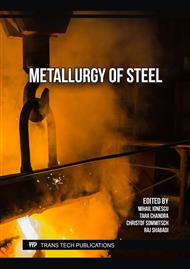p.111
p.117
p.123
p.129
p.135
p.141
p.147
p.153
p.159
Effect of Pressure on High-Temperature Oxidation of Ferritic Stainless Steels
Abstract:
High-temperature oxidation is a widely studied topic in the field of Solid Oxide Fuel Cells as it commonly affects the steels used in stacks and other system components. Considering the targeted lifetime of systems using this technology (> 60kh), long-term testing is required to certify material properties throughout the life cycle. The design of accelerated testing is often cited as a way to speed the development and validation of materials for these components. In this work, the effect of pressure (1 to 4 bar) at various operating temperatures (750 to 850°C) on the oxidation kinetics and electrical properties of AISI 441 steel was investigated. While oxide growth was affected by pressure at all test temperatures, electrical properties showed significant changes only at 850°C. The results were supported by theoretical calculations of the oxidation and chromium evaporation kinetics of the steel.
Info:
Periodical:
Pages:
135-139
Citation:
Online since:
November 2023
Authors:
Keywords:
Price:
Сopyright:
© 2023 Trans Tech Publications Ltd. All Rights Reserved
Share:
Citation:



